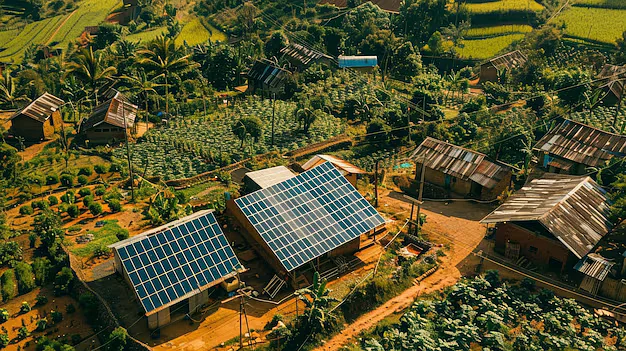The global push for sustainable development has brought renewable energy to the forefront of discussions on rural electrification. In many parts of the world, particularly in developing countries, rural communities remain disconnected from the central electricity grid. This lack of access to reliable electricity hampers progress in education, healthcare, and economic development. However, solar energy is emerging as a transformative solution to bridge this gap and power the future of rural communities.
Solar energy presents a unique opportunity to revolutionise rural electrification. Unlike traditional energy sources, solar power is decentralised, making it an ideal solution for remote areas. Solar panels can be installed on individual homes, schools, and clinics, providing a localised source of electricity that is both reliable and sustainable.
Advertisement
One of the most significant advantages of solar energy is its affordability. While the initial investment in solar panels and batteries can be substantial, the long-term savings are considerable. Solar systems have low operating and maintenance costs, and with the decreasing price of solar technology, the payback period is becoming shorter. For rural communities, this means access to clean, reliable energy without the burden of ongoing fuel costs.
Moreover, solar energy is environmentally friendly. It produces no greenhouse gas emissions and has a minimal impact on the environment compared to fossil fuels. By adopting solar solutions, rural communities can contribute to global efforts to combat climate change while improving their own quality of life.
Advertisement
The success of solar electrification is already evident in several regions around the world. In India, the government’s Solar Power Initiative has brought electricity to thousands of villages, transforming the lives of millions of people. Solar-powered mini-grids provide reliable electricity to entire communities, enabling schools to stay open longer, health clinics to store vaccines, and local businesses to thrive.
Despite the promise of solar energy, several challenges remain. The upfront cost of solar systems can be prohibitive for many rural households, even with the potential for long-term savings. To address this, we urge the governments and international organisations to provide financial support, such as subsidies, grants, and low-interest loans, to make solar solutions more accessible. Technical challenges, including the need for regular maintenance and the limited availability of skilled technicians in rural areas, also need to be addressed.
Investment in local training programmes and creating supply chains for solar components can help ensure the sustainability of solar projects.
Policy support is crucial for the widespread adoption of solar energy in rural areas. Capable organisations should create enabling environments by offering incentives for solar investments, establishing clear regulations, and ensuring that rural electrification is a priority in national energy plans.
The future of rural electrification lies in harnessing the power of the sun. Solar energy offers a scalable, sustainable, and cost-effective solution to the challenges of rural electrification.
By investing in solar infrastructure and creating supportive policies, we can transform the lives of millions of people in rural communities, empowering them with the tools they need to achieve sustainable development.
Advertisement
The road ahead is clear: solar energy has the potential to bring light and opportunity to the darkest corners of the world. It is up to us to seize this opportunity and ensure that no one is left behind in the global energy transition. By working together, we can build a brighter, more sustainable future for all.
(Sachidanand Upadhyay, MD at Lord’s Mark Industries Limited)






_1641011550.jpg?auto=format%2Ccompress&fit=max&format=webp&w=376&dpr=2.0)









 Just one email a week
Just one email a week